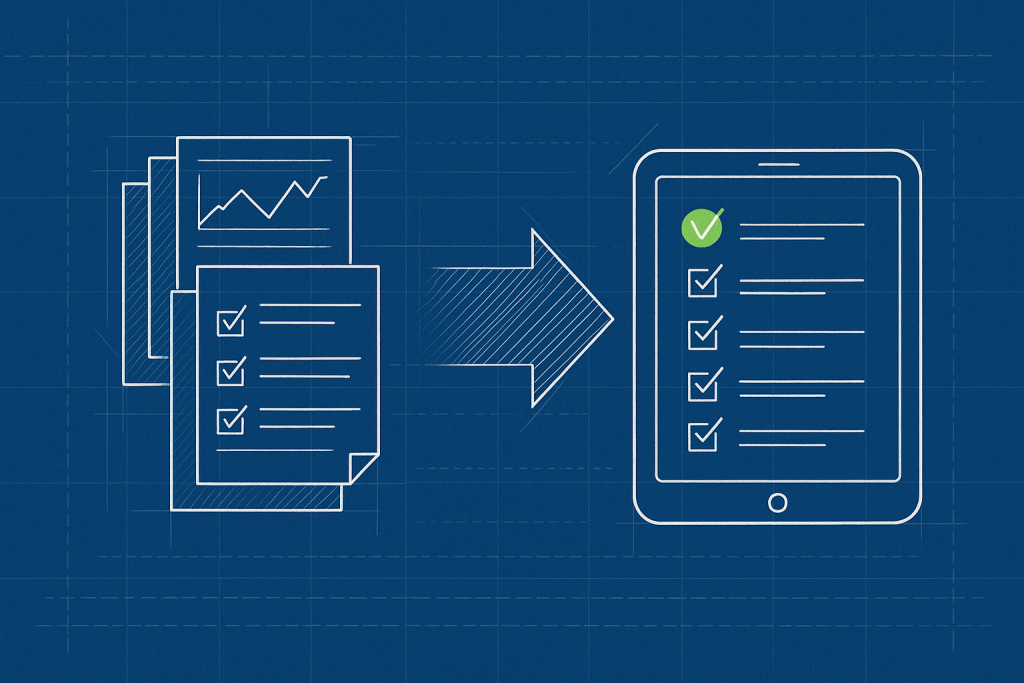
The Limitations of Paper-Based Safety Records #
Paper safety forms have been the standard for decades, but they’re slow, prone to loss, and difficult to analyze. In a world where speed and accuracy matter, sticking to paper can compromise safety outcomes.
Key Drawbacks of Paper Forms #
Delayed hazard reporting.
High risk of incomplete or misplaced records.
Difficulty accessing historical data during audits.
Advantages of Digital Safety Logs #
Instant access from any device.
Searchable archives for fast retrieval.
Real-time sharing between teams and locations.
the efficiency and accuracy of safety management can be the difference between a near-miss and a recordable incident. While paper-based safety records were the standard for decades, they are increasingly becoming a liability. In 2025, clinging to outdated paper systems can hinder your ability to manage risk effectively and maintain compliance with Ontario’s rigorous health and safety regulations.
The Key Drawbacks of Paper Forms #
Relying on paper for critical safety documentation presents significant challenges that can compromise your entire safety program.
Delayed Hazard Reporting: A paper form filled out in the field might sit in a truck or on a supervisor’s desk for hours or even days before being seen. This critical lag time leaves hazards unaddressed, exposing other workers to unnecessary risk.
High Risk of Incomplete or Misplaced Records: Paper is fragile. Forms can be lost, damaged by water, or rendered useless by illegible handwriting. This not only results in lost data but can also create a serious compliance issue during an audit by the Ministry of Labour, Immigration, Training and Skills Development (MLITSD).
Difficulty Accessing Historical Data: Preparing for an audit or investigating an incident becomes a time-consuming manual effort. Sifting through filing cabinets to find specific records is inefficient and makes it nearly impossible to analyze safety trends over time.
The Advantages of Digital Safety Logs #
Transitioning to a digital safety management system addresses the shortcomings of paper and unlocks new potential for proactive safety.
Instant Access and Real-Time Reporting: With a digital platform, a worker can report a hazard from a phone or tablet—complete with photos—and a safety manager is notified instantly. This allows for immediate corrective action, drastically reducing the window of risk.
Searchable Archives for Fast Retrieval: All records are stored in a secure, centralized cloud database. This eliminates the risk of physical loss and makes your entire safety history instantly searchable. Need to show a ministry inspector all of your Joint Health and Safety Committee (JHSC) meeting minutes from the past year? It takes seconds.
Data-Driven Insights and Real-Time Sharing: Digital data can be automatically compiled into dashboards, revealing trends in incidents or inspection failures. This allows for proactive, data-driven decision-making and facilitates the real-time sharing of critical safety information between teams and locations.
Related Reading: For more on data in safety, see Workplace Safety Metrics That Matter
#WorkplaceSafety #EHS #DigitalTransformation #SafetyManagement #IncidentReporting




